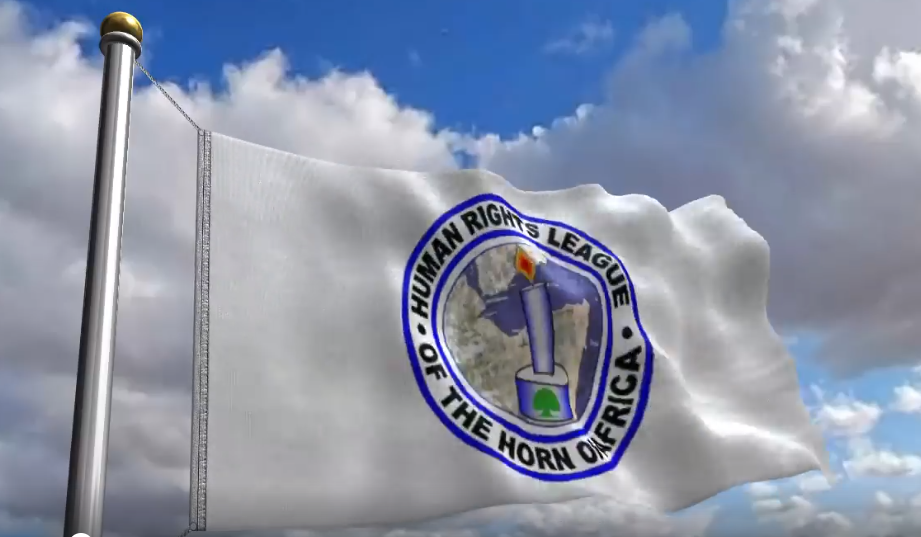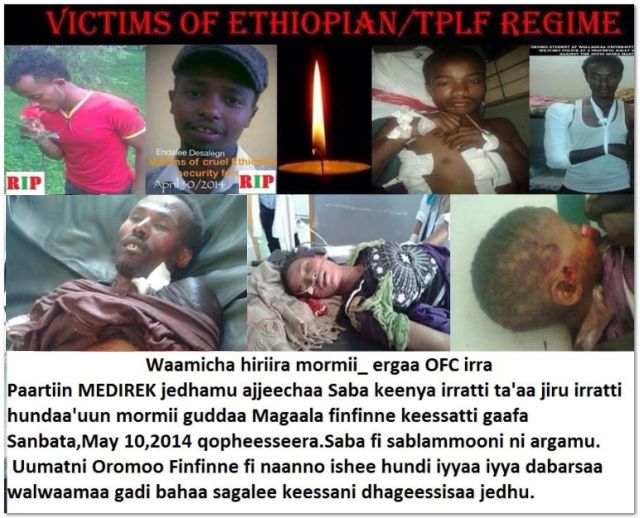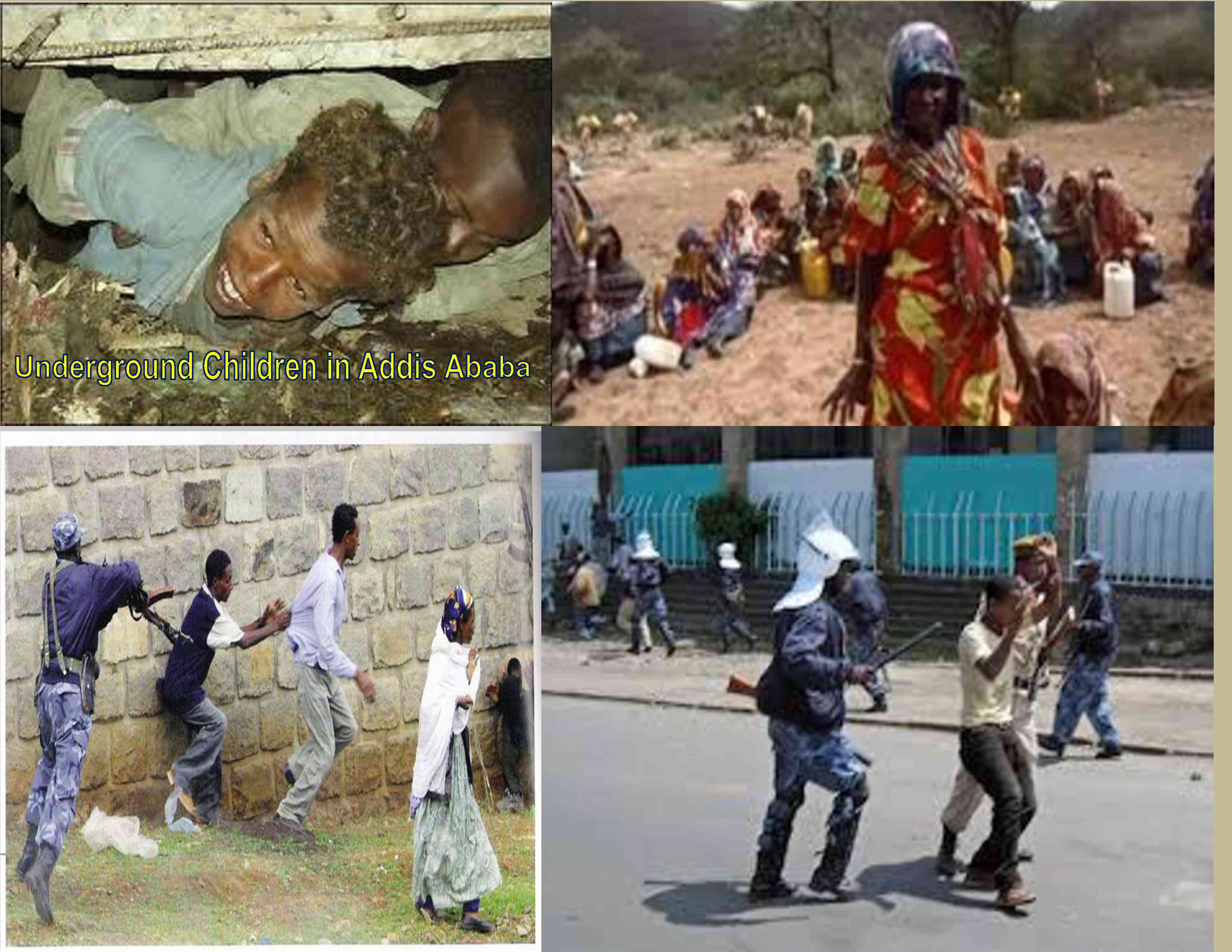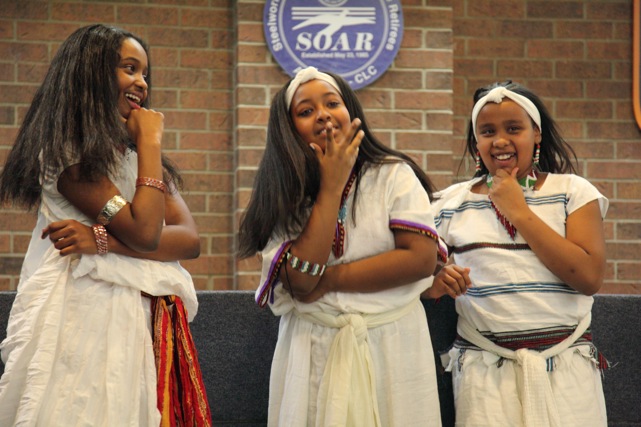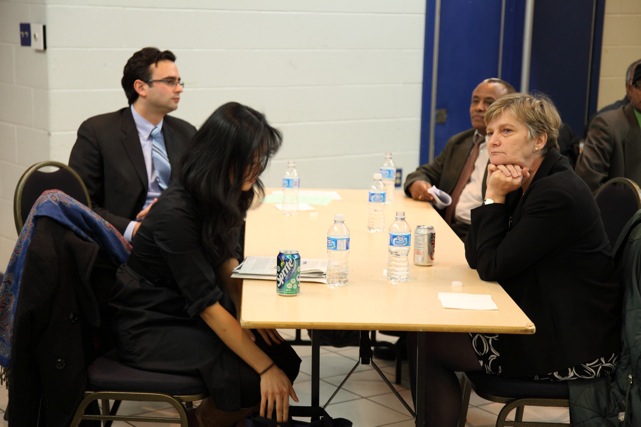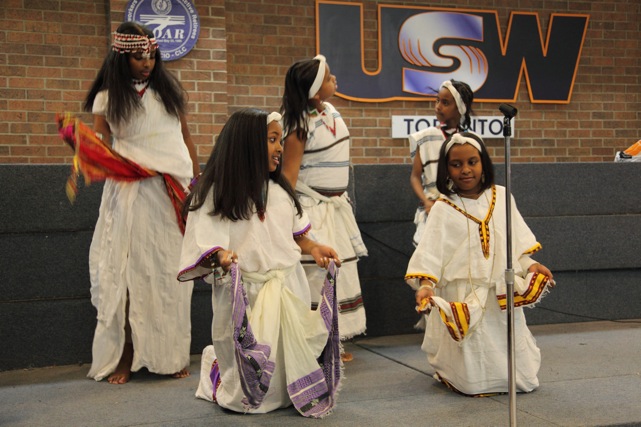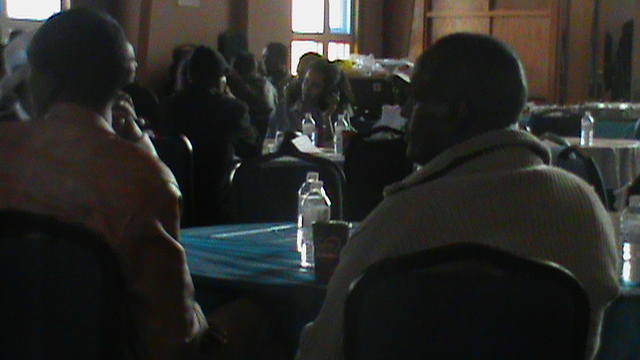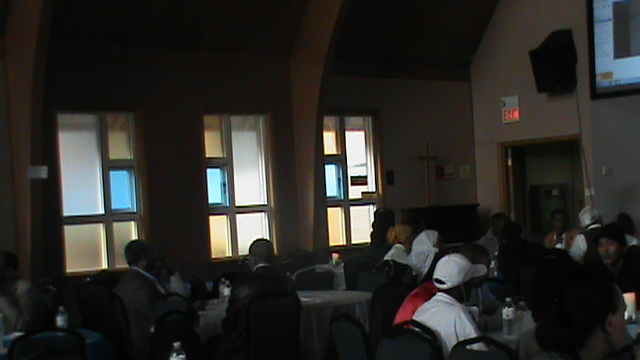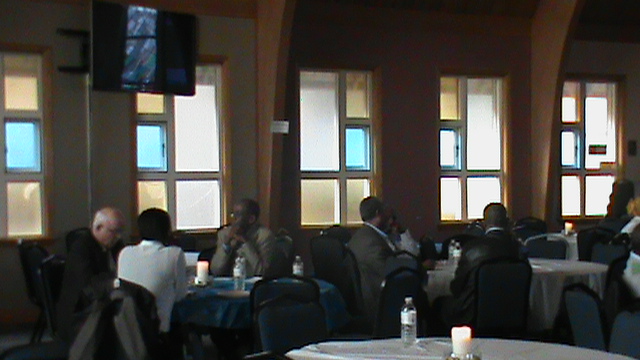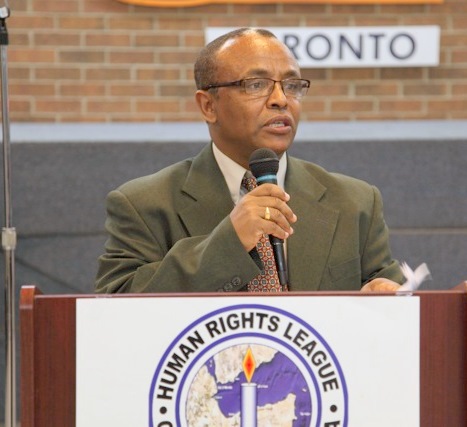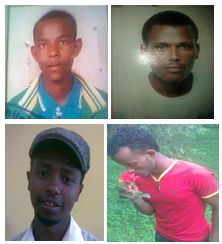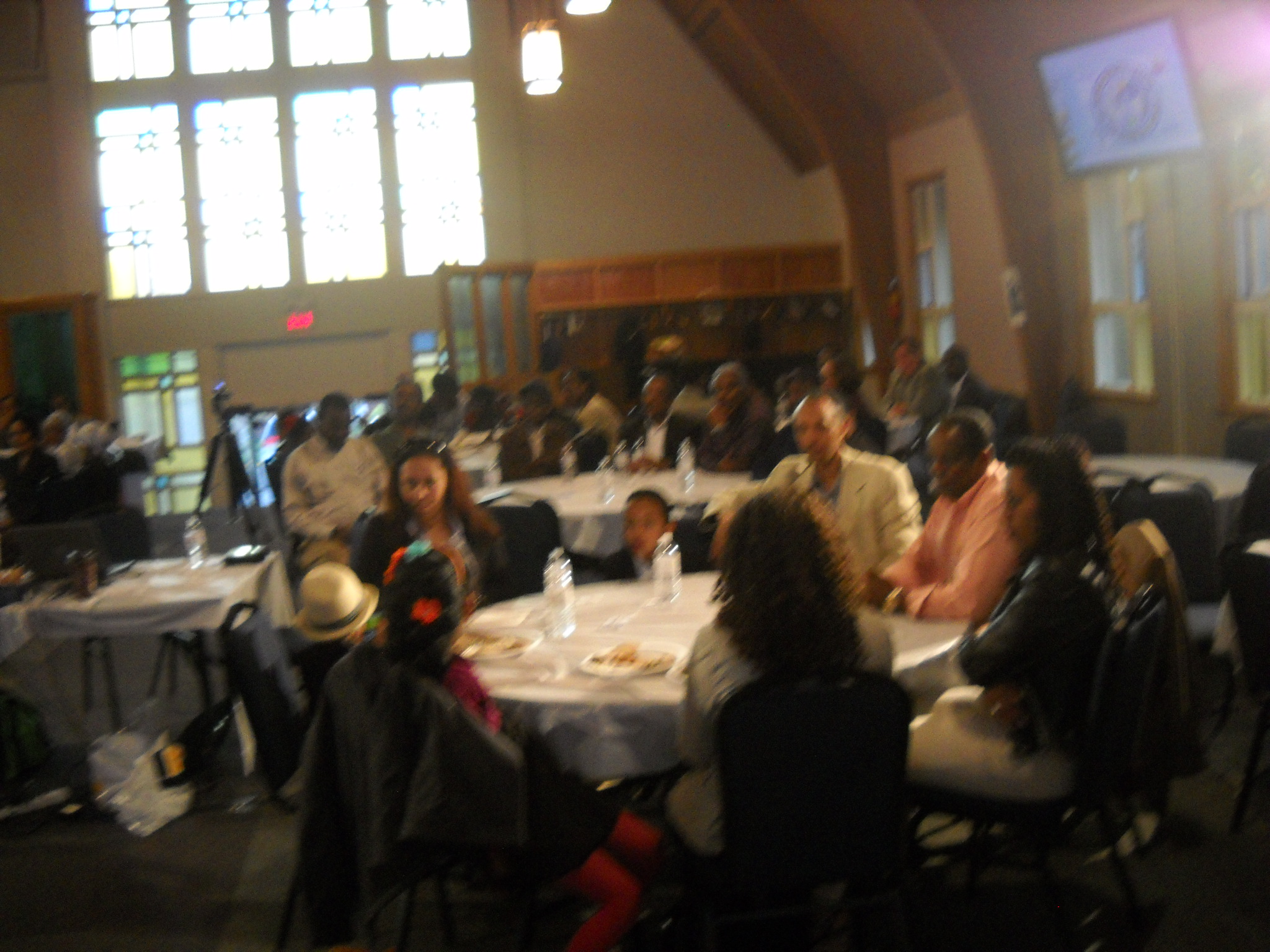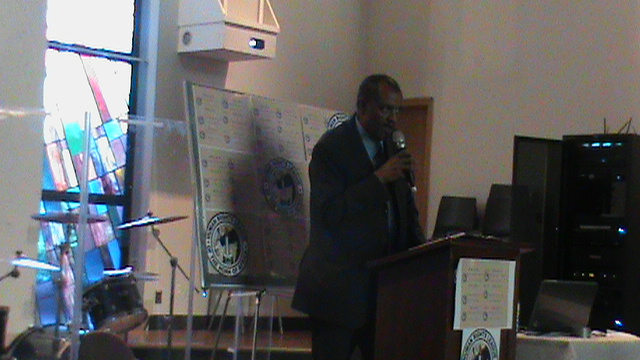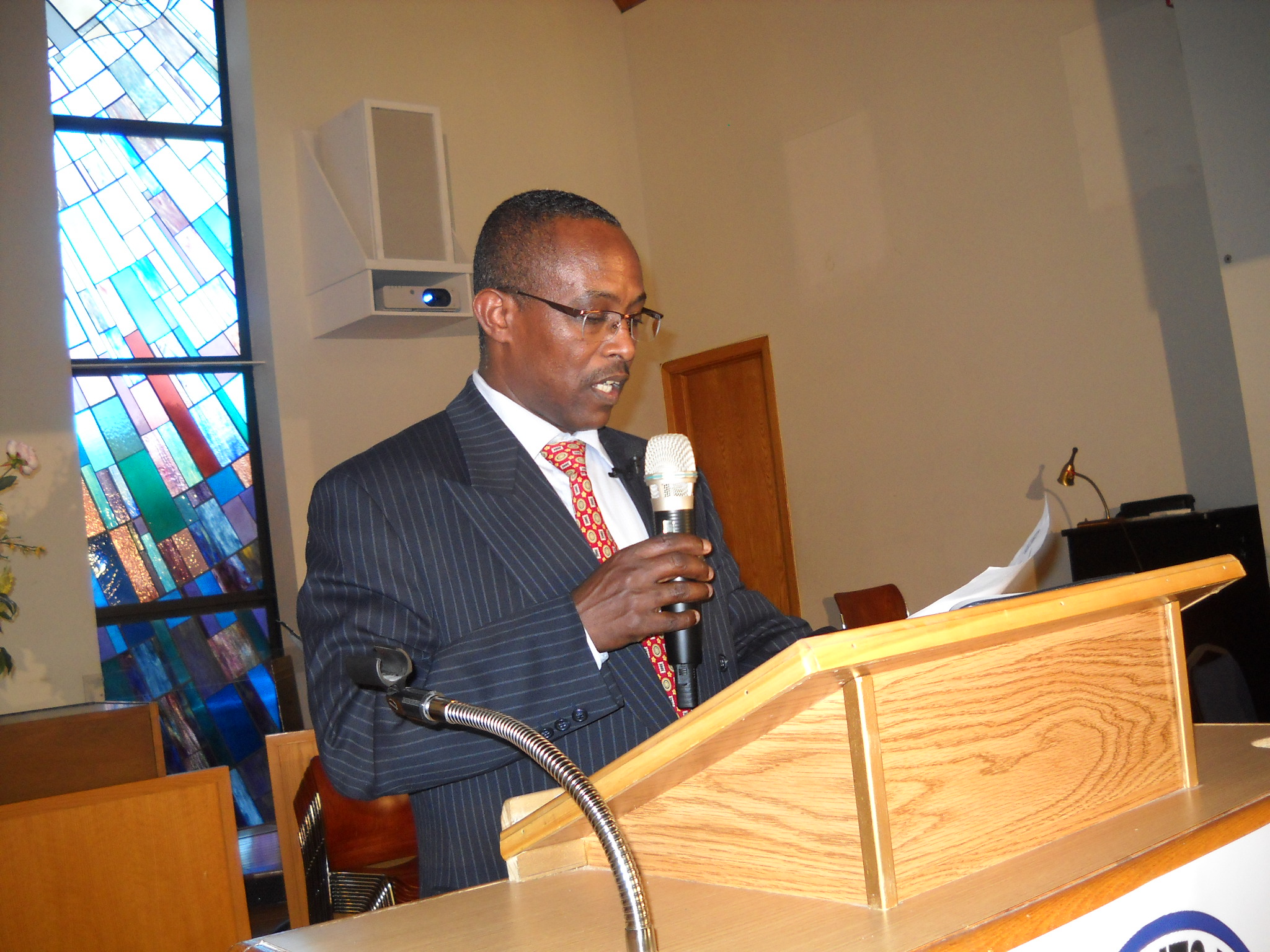Field Report
Garoma Bekele Wakessa
Table Contents Pages
I. Introduction ———————————————————————————————– 3
1.1. Problem of Statement ————————————————————————— 4
2. Refugee and Human Rights ————————————————————————– 6
2.1 Refugee: Meaning and Cause ——————————————————————— 6
2.1.1 Meaning ————————————————————————————- 6
2.1.2 Cause —————————————————————————————- 6
2.2 The Rights of Refugees —————————————————————————- 7
2.3 Description of the Problem ———————————————————————- 10
2.3.1 Country profile Oromia; Ethiopia —————————————————– 10
2.3.2 Reasons for fleeing of Oromo people ————————————————- 14
2.3.3 State of Human Rights of Oromo Refugee ——————————————- 15
3. UNHCR and Refugee Protection ——————————————————————–17
4. Summary and Conclusion ————————————————————————— 19
1. Introduction
Today, migration is one of the biggest problems in the world. People are fleeing from their home country, where there is fear of persecution or have suffered from oppression to reside elsewhere to find more security for their life. The main causes for migration are fear of being persecuted for reasons of race, religion, nationality, membership of a particular social group or political opinion and others.
The UNHCR documents show that the numbers of refugees are increasing from year to year all over the world. According to United Nations High Commissioner for Refugees report of “2009 Global Trends refugee asylum-seekers”[1] Ethiopia was the country of origin of the fourth highest number of asylum claimants worldwide (42,500). Among which 90% are estimated from Oromo nationals
International Organization for immigration/IOM statistical data[2] indicates that the number of immigrants in East of Africa increased more comparing with the other parts of the world. This increase in numbers of immigrants will continue unless the there is no means of reducing poverty, and political intolerance among the governments and citizens of the countries in the sub region. The UNHCR is responsible for protecting international refugees and internal displaced people and assisting with the problems created by mass movements of people resulting from civil disturbance or military conflict in their home country.
People need food, closing, shelter, school, health care, and etc where ever they reside as a refugee until they receive a permanent resettlements. More than any thing the security is the most important for immigrants where ever they reside as internal refugee or international refugee. Many reports indicate that in different parts of the world where there are refugee camps, refugees are exposed to various human rights violations from the security agents of the country they reside in and some times from the government agents of their home country. The human rights violations against refugees are common in the developing countries of the world. The situation of refugees in the Horn of Africa is very alarming and it looks like there are over flow of people to the extent that UNHCR can not manage to provide necessary assistances. Today, Many human rights organizations are reporting about the human rights violations committed against refugees in Kenya, In Somaliland, Puntland and Yemen. They are under sever human rights violations including sexual abuse, imprisonment, killings, unwilling deportation to their home country. This paper focuses to give analysis on the human rights violations committed against Oromo refugees residing in Kenya, Sudan, Somalia Djibouti and Yemen.
1.1 Problem Statement
The Horn of Africa has constantly been the most conflicted corner of the World. Countries of the Horn (Sudan, Somalia, Ethiopia, Djibouti, Kenya and Uganda) have been unstable for many decades. There are many reasons for the instability in the sub- region. While most of the causes of conflict in the Horn exist in many other parts of the world, I am not sure as many of them occur elsewhere with such frequency or persistency. The common causes for instabilities in all countries of the Horn are poverty, civil war, political intolerance and others.
The borders in the Horn generally demarked during the colonial era and after in an arbitrary fashion, often splitting ethnic groups among three or more states. The borders are not only arbitrary but they are porous; one can easily cross them undetected. People living in different states as a neighbor across the border are often from the same ethnic back ground. This helped them to move from one country to another with ease. Easy access to cross the borders from one country to the neighboring country may increase the flow of the people.
The political intolerance in Ethiopia for more than a century between the ruling classes from the North part of the country, the Habesha rulers over the southern part of the country Oromo and others has been the main reason for Oromos and others to flee their home country to live in exile in different parts of the world.
In the recent years the number of refugee claimant of Oromos in Kenya, Somaliland, Puntland, Uganda, Yemen, and other part of the world become increase because of the TPLF/EPRDF government atrocity against the Oromo nation. Today, the Oromo people contribute more than 45% of the Ethiopian population. The country of Oromo, Oromia was annexed at the end of 19th century to Abyssinia after a bloody war in which more than five million Oromos were killed. The Ethiopian King, Minelik II, invaded the Oromo territory and created a new country called Ethiopia by annexing Oromia and others with Abyssinia forming a new territory. Prior his invasion, the north part of Ethiopia was known as Abyssinia and the South as Oromania (Krapf 1860)[3] or Oromia. Since the invasion of Minelik Oromos remained under colony for more than a century. The Oromos of Ethiopia and other Southern nations and nationalities have been struggling against the north Abyssinians since the time of occupation. The Oromo Libration Front was formed in 1973 to lead the struggle of the Oromo people against the Habasha colonizers. Many Oromo men and women gave their lives for the independence of Oromia in this long years of struggle.
Under the current TPLF/EPRDF government of Ethiopia, many educated Oromo nationasl were tortured, killed, imprisoned, intimidated and others fled their home country to live as refugee in neighboring countries in different parts of the world. The Oromo refugees in Kenya, Sudan, Somaliland, Puntland, Djibouti, Yemen, Libya, and Egypt are living under harsh conditions in recent days. They are often intimidated by the security agents of each country and most of the time the Ethiopian government security agents are chasing them down following them in the neighboring countries. The Oromo asylum seekers who fled their country because fear of persecutions are often taken to the prisons on their arrival in the second country before they visit the UNHCR office. This has been remained the most challenging for the refugees and UNHCR for many years in the Horn of Africa.
- 1. Refugee and Human Rights
2.1 Refugee; Meaning and Cause
2.1.1 Meaning
Definitions of refugee come into play when countries and organizations attempt to determine who is and who is not a refugee. Asylum seekers, that is, those who are seeking refugee status in another country normally need to establish individually that their fear of persecution is well founded and undergo a legal procedure in which the host country decides if she or he qualifies for refugee status. However, during a mass exodus, it may not be possible for a host country to carry out individual screening. In such circumstances, particularly when civilians are fleeing for similar reasons, a ‘group’ determination of refugee status may be declared, whereby each civilian is considered a refugee, in the absence of evidence to the contrary.
According to UN refugee convection article 1 A(2) relating to the status of refugees of 1951, a refugee is defined as a person who “owing to a well-founded fear of being persecuted for reasons of race, religion, nationality, membership of a particular social group or political opinion, is outside the country of his nationality, and is unable to or, owing to such fear, is unwilling to avail himself of the protection of that country or return there because there is a fear of persecution…”
2.1.2. Cause
It is obvious people are leaving their home country to seek asylum from fear of persecution in their country. To be considered as a refugee the reasons for persecution must be because of one of the five grounds listed in the Refugee Convention article 1 A(2) race, religion, nationality, membership of a particular social group or political opinion. Persecution based on any other ground will not be considered.
Race and religion are used in the broadest sense. Race includes ethnic groups and social groups of common descent, and religion is an identification with a group that tends to share common traditions or beliefs, as well as the active practice of religion, while nationality includes an individual’s citizenship. Persecution of ethnic, linguistic and cultural groups within a population also may be termed persecution based on nationality.
A particular social group refers to people who share a similar background, habits or social status. This category often overlaps with persecution based on one of the other four grounds. It has applied to families of capitalists, landowners, homosexuals, entrepreneurs and former members of the military.
Political opinion refers to ideas not tolerated by the authorities, including opinions critical of government policies and methods. It includes opinions attributed to individuals (i.e., the authorities think a person has a certain political opinion) even if the individual does not in fact hold that opinion. Individuals who conceal their political opinions until after they have fled their countries may qualify for refugee status if they can show that their views are likely to subject them to persecution if they return home. Journalists, Singers, and some academics are those who hold most of the time different opinions from their governments and subjected to prisons, torture and persecutions
2.2 The Rights of Refugees
In the Universal Declaration of Human Rights Article 14 (1) confirmed every one has the right to seek and to enjoy in other countries asylum from persecution[4]. People who already fled their country have rights to have a shelter and protection from the country he or she reside as a refugee. In addition the convention against Torture and other cruel, inhuman or degrading treatment or punishment under article 3/ (1,2) stated, no State Party shall expel, return (“refouler”) or extradite a person to another State where there are substantial grounds for believing that he would be in danger of being subjected to torture, and for the purpose of determining whether there are such grounds, the competent authorities shall take into account all relevant considerations including, where applicable, the existence in the State concerned of a consistent pattern of gross, flagrant or mass violations of human rights[5].
The International refugee law explain the prohibition of forced return (nonrefoulement) of a refugee to his or her country of origin. Prohibition on the forced return of a refugee is one of the most fundamental principles in the international refugee law. [6] In the Convention Relating to the Status of Refugee article 33 says that no state “shall expel or return (‘refouler’ in French) a refugee in any manner whatsoever to the frontiers of territories where his life or freedom would be threatened on account of his race, religion, nationality, membership of a particular social group or political opinion.”[7]
Asylum seekers often leave their country without any legal documents to save their life. Because of this some countries detain asylum seekers upon arrival, during the asylum process or while waiting for deportation (refoulement) breaching the international agreements. Asylum seekers may have already suffered imprisonment and Torture in the country from which they have fled. Therefore, the consequences of detention may be particularly serious, causing severe emotional and psychological stress.
In addition to the refugee law Article 31 of the Refugee Convention says that refugees should not be penalized for having entered a country illegally if they have come directly from a place where they were in danger and have made themselves known to the authorities.[8] Therefore, asylum seekers should not be detained for being in possession of forged identity papers or for destroying identity or travel documents.
Articles 12 to 30 of the Refugee Convention[9] set out the rights which individuals are entitled to once they have been recognized as Convention refugees. All refugees must be granted identity papers and travel documents that allow them to travel outside the country. Refugees must receive the same treatment as nationals of the receiving country with regard to the following rights:
- Free exercise of religion and religious education
- Free access to the courts, including legal assistance
- Access to elementary education
- Access to public relief and assistance
- Protection provided by social security
- Protection of intellectual property, such as inventions and trade names
- Protection of literary, artistic and scientific work
- Equal treatment by taxing authorities
- Refugees must receive the most favourable treatment provided to nationals of a foreign country with regard to the following rights:
- The right to belong to trade unions
- The right to belong to other non-political nonprofit organizations
- The right to engage in wage-earning employment
- Refugees must receive the most favourable treatment possible, which must be at least as favourable to that accorded aliens generally in the same circumstances, with regard to the following rights:
- The right to own property
- The right to practice a profession
- The right to self-employment
- Access to housing
- Access to higher education
- Refugees must receive the same treatment as that accorded to aliens generally with regard to the following rights:
- The right to choose their place of residence
- The right to move freely within the country
- Free exercise of religion and religious education
- Free access to the courts, including legal assistance
- Access to elementary education
- Access to public relief and assistance
- Protection provided by social security
- Protection of intellectual property,
such as inventions and trade names - Protection of literary, artistic and scientific work
- Equal treatment by taxing authorities
2.3 Description of the Problem
2.3.1 Country profile Oromia; Ethiopia
The country of the Oromo people is called “biyya Oromoo” which means Oromo Country or Oromia. Today, Oromia is part of the Ethiopian Empire since it was annexed to Abyssinians at the end of the 19th century. Krapf (1860) used in his Travels, researches, and missionary labors book the term Ormania to designate the nationality of the country of the Oromo people.[10]
This, most probably, originated from his reference to the people as Orma or Oroma. Oromia was one of the free nations in the Horn of Africa until its colonization and occupation by Abyssinia at the end of the nineteenth century. It is approximately located between 2 degree and 12 degree N and between 34 degree and 44 degree E[11]. It is bordered in the east by Somali and Afar lands and Djibouti, in the west by the Sudan, in the south by Somalia, Kenya and others and in the north by Amhara and Tigre land or Abyssinia proper. The land area is about 600,000 square kilometers. Out of the 50 or so African countries, it is exceeded in size by only 17 countries. It is larger than France, and if Cuba, Bulgaria and Britain were put together, they would be approximately equal to Oromia in size
Oromia
The physical geography of Oromia is quite varied. It varies from rugged mountain ranges in the centre and north to flat grassland in most of the lowlands of the west, east and south.
Similarly, there are many rivers and lakes in Oromia. Many of the rivers flow westwards into either the Blue Nile or the White Nile, and others flow eastwards to Somalia and Afar land.
The climate is as varied as the physical geography, although close to the equator (to the north of it), because of the mountain ranges, high altitudes and vegetation, the climate is very mild and favorable for habitation. Snow can be found on the mountains such as Baatu and Karra. In the medium altitudes (1800-2500 m) the climate is very mild throughout the year and one of the best. Up to 80% of the population lives at this altitude and agriculture flourishes.
The low altitude areas (below 1500 m) in west, south and central part are relatively warm and humid with lush tropical vegetation, and although few live there permanently, most graze their cattle and tend their beehives there. Although there is little agriculture at this altitude at present, it has great potential for the future. As the highland areas are already eroded and over populated, people are gradually moving to the lowlands. The low altitude areas in the east and south-east are mostly semi-arid and are used by pastoralists seasonally.
The vegetation of Oromia ranges from savanna grassland and tropical forest to alpine vegetation on the mountaintops. The forests contain a variety of excellent and valuable timbers. Oromia is known for its unique native vegetations as well as for being the centre of diversity for many different species. For instance, crops like coffee, anchote (root crop), okra, etc. are indigenous to this area.
The Oromo make up a significant portion of the population occupying the Horn of Africa. In the Ethiopian Empire alone, Oromo constitute about ~50% inhabitants of the Ethiopian Empire. In fact, the Oromo nation, as one of the most numerous nations in Africa, enjoys homogeneous culture and shares a common language, history and descent, and once shared common political, religious and legal institutions. During their long history, the Oromo developed their own cultural, social and political system known as the Gadaa system.[12]
It was a uniquely democratic political and social institution that governed the life of every individual in the society from birth to death.
Ecologically and agriculturally, Oromia (Oromo country) is the richest region in the Horn of Africa. Livestock products, coffee, oil seeds, spices, mineral resources and wild life are all diverse and abundant. In spite of all these advantages, a century of colonization by Abyssinia (Ethiopia), a backward nation itself, has meant that the Oromo people have endured a stagnant existence where ignorance and famine have been coupled with ruthless oppression, subjugation, exploitation and above all, extermination. Thus, for the last one hundred years under the Ethiopian rule, the Oromo have gained very little, if anything, in the way of political, social and economic progress.
The Oromo were colonized during the last quarter of the nineteenth century by a black African nation – Abyssinia – with the help of the European colonial powers of the day. During the same period, of course, the Somalis, Kenyans, Sudanese and others were colonized by European powers. The fact that the Oromo were colonized by another black African nation makes their case quite special.
During the process of colonization, between 1870 and 1900, the Oromo population was reduced from ten to five millions. This period coincides with the occupation of Oromo land by the Abyssinian emperors Yohannes 1V[13] and Menilek II.[14] After colonization, these emperors and their successors continued to treat Oromo with utmost cruelty. Many Oromo were killed by the colonial army and settlers, others died of famine and epidemics of various diseases. Those who remained on the land were reduced to the status of gabbar (a peasant from whom labor and produce were exacted, and the gabbar system is a crude form of serfdom).
Haile Selassie[15] consolidated Yohannes and Menilek’s gains, and with the use of violence, Haile Selassie obstructed the process of natural and historical development of the Oromo society – political, economic and social. In all spheres of life, discrimination, subjugation, repression and exploitation of all forms were applied. Everything possible was done to destroy Oromo identity – culture, language, custom, tradition, name and origin. In short, Haile Selassie maintained the general policy of genocide against the Oromo.
The 1974 revolution was brought about by the relentless struggle over several years by, among others, the Oromo peasants. The military junta, headed by Mengistu Haile Mariam,[16] usurped power and took over the revolution. This regime continued on the path of emperors Yohannes, Menilek and Haile Selassie in the oppression, subjugation and exploitation of Oromo, the settlement of Abyssinians on Oromo land and the policy of genocide.
Forced to fight against Eritreans, the Somalis and others, many Oromo have fallen in battles. Many others died on the streets of cities and towns during the so-called “Red Terror” period, and in a similar program that expanded in the countryside thereafter. Massacres in towns and villages coupled with bombing and search-and-destroy programs have caused the destruction of human lives, crops, animals and property, have driven Oromo from their land, and have forced them to seek refuge in neighboring countries. Not surprisingly, this ruthless oppression and persecution of peoples has resulted in the largest flight of refugees in Africa. A very large proportion of the refugees in the Horn of Africa are Oromo.
In its attempt to oppress and eliminate the essential elements of Oromo culture, the present regime has used cover-up words such as ‘development, relief, settlement, villagization and literacy campaign’ to mislead the world. In fact, most of these programs and projects have been aimed at displacing Oromo people and denying them freedom, justice, human dignity and peace, thereby hastening the process of de-Oromization. The struggle of the Oromo people, then, is nothing more than an attempt to affirm their own place in history. It seeks equality, human dignity, democracy, freedom and peace. It is not directed against the masses of a particular nation or nationality, nor against individuals, but rather against Ethiopian colonialism led by the Abyssinian ruling class. Thus, it is the Ethiopian colonial system, and not the Amhara/Tigrean masses or individuals, which is under critical consideration.
Today under the current regime Oromo are deprived from all their rights and many fled to their home land to seek asylum
2.3.2 Reasons for fleeing of Oromo People
Most of the world’s refugees flee strife, based in part on interethnic conflict. The Oromo, one of the largest nations in Africa, is no exception. Living primarily in Ethiopia, they account for more than 50 percent of the country’s population. The ruling Habesha, who constitute less than 50 percent of the nation’s population but have ruled since the 19th century, have been systematically depriving the Oromo from their fertile lands and subjecting them to torture, imprisonment, forced conscription, and execution. At least half of the more than 2.5 million refugees fleeing Ethiopia are Oromo. Many Ethiopian refugees are not direct victims of the border dispute between Ethiopia and the neighboring states, but rather of internal civilian and government conflict.
The roots of the present Oromo TPLF/EPRDF conflict lie in the late 1800s when the independent Oromo nation was conquered by Abyssinians who were creating an empire. The Oromo have always viewed the Habesha Emperor Menelik and his successors, backed by European powers, as colonizers. His retainers acquired rights over the most productive Oromo lands and were allowed to exact tribute from even greater areas. Oromo Culture and language were subjugated and replaced by Habesha culture and language.
The Oromo people have been struggling for a century to get back its Country( Oromia), political power and economic ownership which was taken from it by force during the war against the Abyssinian colonizers of King Minelik II in the end of 19th century.
2.3.3 The State of Human Rights of Oromo Refugee
The porous border between Oromia and the neighbor countries such as Kenya, Sudan, Somalia and Djibouti gives the opportunity for the frightened people to escape easily from the risk. After crossing the border the challenge the refugee face in the host countries are detention, harassment, killing and often refoulement (deportation) to Ethiopia from where thy escape from fear of persecution.
According the field study undertaken by the Oromia Support Group[17], the Human Rights Organization based in UK in September 2010, the main problems of Oromo refugees in the neighbor countries are related to security and mental health. The study conducted on Refugees in Kenya, Kakuma and Dadaab refugee camps indicate, especially single mothers, lived in fear of attack by thieves and rapists. Many are suffering from mental illness because of the stresses of saying for many years in refugee camps where there are no enough basic necessities. Oromo refugees living in cities out of refugee camp are more exposed to all forms of human rights violation including beating, detention, rape and refoulement. Countries of the Horn of Africa are deporting the refugees breaching the rights of refugees or asylem seekers mentioned the universal declaration of Human Rights article 14(1) and convention against Torture article 3 (1 &2) .
The worry some is the involvement of Ethiopian security force in the hunting of asylum seekers in the neighbor countries without any restriction. Security threats from agents of the Ethiopia government are much more severe in Nairobi/Kenya, Khartoum/Sudan, Djibouti, Mogadishu/Somalia and Sana’a/Yemen cities.
The most sever human rights violation was committed against Oromo refugees in Somalia after Somalia was invaded by Ethiopian government troops in 2006 2009.Many Oromo refugees were killed by Ethiopian soldiers because they believe Oromo are OLF. Many are killed by Somalis because they are Ethiopian.[18]
International human rights Organizations including Amnesty International, Human Rights Watch and the Sub-region human rights organization Human Rights League of the Horn of Africa repeatedly reported Many Oromo refugees were detained, tortured and handed over to the Ethiopian Security agents at different times.
- 3. UNHCR and Refugee Protection
Governments normally guarantee the basic human rights and physical security of their citizens. But when civilians fled their home country and become refugees this safety net disappears. Assylum seekers often cross the borders without any legal documents. Upon the arrival in the second country they are automatically exposed to many challenges. Without some sort of legal status in their asylum country, they would be exceptionally vulnerable to exploitation and other forms of ill treatment, as well as to imprisonment or deportation. Governments bear the prime responsibility for protecting refugees on their territory, and often do so in concert with local non-governmental organizations (NGOs). However, in many countries, UNHCR staff also work alongside NGOs and other partners in a variety of locations ranging from capital cities to remote camps and border areas. They attempt to promote or provide legal and physical protection, and minimize the threat of violence – including sexual assault – which many refugees are subject to, even in countries of asylum.
The 1951 refugee convention[19] and its 1967 Protocol[20] are the cornerstones of modern refugee protection, and the legal principles they enshrine have permeated into countless other international, regional and national laws and practices governing the way refugees are treated. One of the most crucial principles laid down in the 1951 Convention is that refugees should not be expelled or returned “to the frontiers of territories where [their] life or freedom would be threatened.” The Convention also outlines the basic rights which states should afford to refugees, and it defines who is a refugee – and who is not (for example it clearly excludes fighters, terrorists or people guilty of serious crimes). UNHCR
The United Nations High Commissioner for Refugees (UNHCR)was created by the UN General Assembly in 1950, but actually began work on 1 January 1951. States still recovering from the devastation of World War II wanted to make sure that they had a strong and effective organization to look after the interests of – or “protect” – refugees in the countries where they had sought asylum. UNHCR was also charged with helping governments to find “permanent solutions” for refugees.
UNHCR’s original mandate was limited to a three year programme to help the remaining World War II refugees. However, the problem of displacement not only failed to disappear, it turned into a persistent worldwide phenomenon.
In December 2003, the UN General Assembly finally abolished the requirement for the agency to keep renewing its mandate every few years. The refugee agency’s statute was drafted virtually simultaneously with the 1951 Refugee Convention, and as a result the key international legal instrument, and the organization designed to monitor it, are particularly well synchronized.
Article 35 of the 1951 Convention makes the relationship explicit, and requests states to cooperate with UNHCR in matters relating to the implementation of the Convention itself and to any laws, regulations or decrees that states might draw up that could affect refugees. However governments of the Horn of Africa are very reluctant to abide the convention to cooperate with the organization.
It is UNHCR responsibility to make sure that the rights of refugees mentioned in the Covenants of refugee status articles 12 to 30[21] is respected by the host countries.
Refugee Status Determination and searching the Resettlement in the host country or in the third country are the responsibilities of the UNHCR. Regarding this there are many complaints from the asylum seekers that the UNHCR officers need to make more efforts and transparencies .
1.4 Summary and Conclusion
Refugees are desperate people looking for safe and better life else, where they can live without fear of persecution and intimidation. Most of the refugees were those who languished in prisons and physically and psychologically abused, and often who were tortured and raped, by the government security agents and polices because of their political, religion and etc believes different from the government held.
Majority of Oromo refugees living in the neighboring countries are those who had been tortured or raped in TPLF/EPRDF detention centers, and currently suffering from psychological and physical problems.
In his field research study “Ethiopia exports more than coffee”[22] of September 2010 on the situation of Oromo refugees living in different refugee camps in Kenya, Dr. Trevor Truman confirmed majority of them are suffering from fiscal and mental problems.
The two weeks investigation of health and security needs of Oromo refugees in Kenya by Dr. Trevor showed out of 58 interviewed refugees the majority complained that they were tortured and raped by the Ethiopian Governments Security agents in official and secret detention centers. The excessive human rights violation of Ethiopian Security agents against innocent Oromo nation and others were the main cause for the migration of people from Ethiopia to different countries of the world to seek an asylum.
Today, the number of refugees in the Horn of Africa increase than any years in the past. The problem in Darfur/Sudan, the civil war in Somalia, the political tension in Ethiopia, in Eritrea and in Djibouti turned the Horn of Africa the region of immigrants. These countries are producing more refugees every year, which was resulted in economic, political and social crisis in the region.
The present crisis in the Horn of Africa in general and in Ethiopia in particular could be reversed only through the process of democratic system and respect of rule of law. The domestic and international laws and conventions and covenants, civil and political rights, economic, social and cultural rights of the citizens must be respected.
[1] UNHCR , 2009 Global Trends p 18, http://www.unhcr.org/4c11f0be9.html
[2] Estimated number of international migrants worldwide, http://www.iom.int/jahia/Jahia/about-migration/facts-and-figures/lang/en
[3] Travels, researches, and missionary labors during an eighteen years, inauthor:”Johann Ludwig Krapf” , Krapf (1860) Ormania
[4] The Universal Declaration of Human Rights, http://www.un.org/en/documents/udhr/index.shtml
[5] In addition the convention against Torture and other cruel, inhuman or degrading treatment or punishment http://www.hrweb.org/legal/cat.html
[6] International refugee law, http://www.adh-geneva.ch/RULAC/international_refugee_law.php
[7] Convention relating to the Status of Refugees, http://www2.ohchr.org/english/law/refugees.htm
[8] In addition the convention against Torture and other cruel, inhuman or degrading treatment or punishment http://www.hrweb.org/legal/cat.html
[9] Convention relating to the Status of Refugees, http://www2.ohchr.org/english/law/refugees.htm
[10] Travels, researches, and missionary labors during an eighteen years, inauthor:”Johann Ludwig Krapf” , Krapf (1860) Ormania
[11] Oromo in Ancient Egypt, 1991-1759 B.C.12th Dynasty
[12] “Oromia: an Introduction,” by Gadaa Melbaa, Khartoum, Sudan 1988.
[13] Ethiopian History .com, http://www.ethiopianhistory.com/Yohannes_IV
[14] Encyclopedia Britannica, http://www.britannica.com/EBchecked/topic/375017/Menilek-II
[15] Ethiopian History .com, http://www.ethiopianhistory.com/Haile_Selassie
[16] Mengistu Hailemariam, http://www.encyclopedia.com/topic/Mengistu_Haile_Mariam.aspx
[17] Oromia Support Group UK, Ethiopia exports more than coffee,September 2010, http://www.oromo.org/
[18] Oromia Support Group UK, Ethiopia exports more than coffee,September 2010, http://www.oromo.org/
[19] Convention relating to the Status of Refugees, http://www2.ohchr.org/english/law/refugees.htm
[20] Protocol relating to the Status of Refugees, http://www2.ohchr.org/english/law/pdf/protocolrefugees.pdf
[21] Convention relating to the Status of Refugees, http://www2.ohchr.org/english/law/refugees.htm
[22] Oromia Support Group UK, Ethiopia exports more than coffee,September 2010, http://www.oromo.org/
